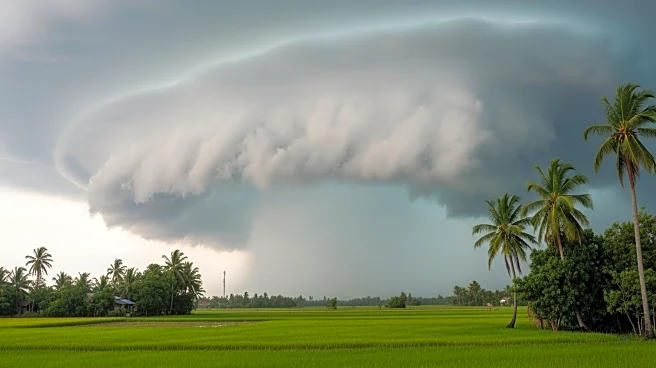What's Happening?
The Ministry of Agriculture and Livestock Development in Nepal has reported significant damages amounting to Rs 3.55 billion in the agriculture and livestock sectors due to heavy rainfall in October. The losses
encompass destruction to crops, livestock, agricultural infrastructure, and seeds. Provincial agricultural offices, in collaboration with local authorities, have compiled data to assess the extent of the damage. Information Officer Mahananda Joshi stated that the Ministry is coordinating with the National Disaster Risk Reduction and Management Authority to provide necessary assistance, including insurance support and relief to the affected farmers. A task force has been formed to evaluate the situation in detail, highlighting the urgent need for immediate support as much of the harvested paddy was spoiled due to excess rainfall.
Why It's Important?
The heavy rainfall and subsequent damage to agriculture and livestock sectors underscore the vulnerability of these sectors to natural disasters. The projected drop in production due to spoiled paddy could have significant implications for food security and the livelihoods of farmers in Nepal. The Ministry's efforts to provide relief and support are crucial in mitigating the immediate impacts and ensuring the resilience of the agricultural sector. The situation highlights the importance of disaster preparedness and the need for long-term strategies to minimize future risks, which could serve as a model for other regions facing similar challenges.
What's Next?
The Ministry plans to conduct further research and assessments to design and implement long-term strategies aimed at improving preparedness and minimizing future risks. This includes providing essential materials such as fertilizers, seeds, and technical assistance to affected farmers through a coordinated mechanism with the Disaster Authority. The ongoing efforts to support farmers and improve disaster resilience will be critical in safeguarding the agricultural sector against future natural disasters.
Beyond the Headlines
The situation in Nepal highlights broader issues related to climate change and its impact on agriculture. The increasing frequency and intensity of weather-related events pose significant challenges to food production and security globally. This event may prompt discussions on the need for sustainable agricultural practices and investment in infrastructure to withstand such events, emphasizing the importance of integrating climate resilience into agricultural policies.











